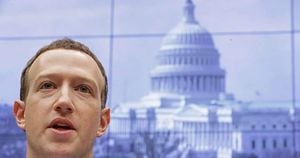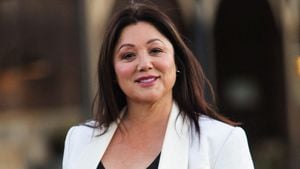On June 29, 2023, the U.S. Supreme Court delivered a landmark ruling against race-conscious admissions, fundamentally altering the admissions processes at many elite universities across the country. The decisions emerged from two high-profile cases, Students for Fair Admissions against Harvard University and University of North Carolina, which challenged the use of race as a factor to promote diversity within the student body. The Court ruled such practices as violations of the Equal Protection Clause.
For many institutions, the question following this historic decision was: how would the absence of affirmative action impact the racial and ethnic composition of their next incoming class? The fallout from the ruling is now becoming clearer, especially as universities release demographic data for their classes of 2028 and beyond.
At Harvard University, the Class of 2028 is particularly notable, being the first cohort admitted under the new guidelines. Contrary to predictions forecasting drastic declines in minority enrollment, the numbers reflected only moderate changes. The percentage of Black students fell from approximately 18% to 14%, and Native American enrollment experienced a similar downturn, decreasing to just 1%. Overall, the Hispanic or Latino population increased slightly, surprising some observers and challenging pre-ruling projections.
Tyler Ransom, Associate Professor of Economics at the University of Oklahoma, who advised Students for Fair Admissions, noted, "Under the status quo, [the current minority student population] would be about 13% Black and 13% Hispanic. And then, without any racial preferences but everything else the same about Harvard’s process, [the minority student population following an affirmative action ban] would drop to about 4.6% Black and 7% Hispanic.” This stark projection emphasized the belief among opponents of affirmative action, who argued the practices unfairly favored some races over others.
It's important to also mention other prestigious institutions’ data, which exhibited more significant declines. At MIT, for example, the percentage of Black students plummeted from 15% to 5%, raising alarms about the broader trends affecting racial diversity at elite universities. Tufts University and Amherst College reported similar troubling statistics, spotlighting how some institutions struggled under the new admissions framework.
While the impact at Harvard was less severe than many anticipated, it did raise questions about how certain schools managed to maintain diversity. Discussions around admissions strategies at Harvard indicated subtle reforms had been initiated. For this admissions process, the university used altered methods to calculate demographics, excluding international students and students who chose not to disclose their race from the data, causing shifts across enrollment percentages.
At the same time, the selective nature of universities like Yale, which reported stable minority representation, demonstrated strategic efforts to reach diverse applicant pools. The Class of 2028 at Yale saw African American students holding at 14% and experienced growth among Hispanic or Latino applicants, contrary to trends at many of their peers.
The demographic outcomes across these elite schools fit within the wider narrative of U.S. higher education’s response to the Court's decision, characterized by both immediate drop-offs and unexpected gains. Swarthmore College illustrated the mixed results as well. Initially, it observed declines across diversity metrics, particularly with domestic students of color dropping from 56% to 52%, reflective of national trends toward lowered Black and Hispanic enrollment.
Nevertheless, with the new admissions climate, Swarthmore also welcomed new first-gen college students and increased the percentage of Pell Grant recipients among its new class, reflecting the college's commitment to accessibility amid the shifting legal framework. Jim Bock, Vice President and Dean of Admissions at the college, explained, "We remain committed to increasing access to [an education at] Swarthmore and intentionally seek to connect with low-income students.”
This commitment to inclusivity amid challenges posed by the Supreme Court ruling has sparked broader debates across academic institutions. Some schools have reshaped their outreach strategies to increase recruitment from historically underrepresented populations, emphasizing clear communication and building relationships with community organizations.
The measure of success for colleges will increasingly depend on their ability to not only transform enrollment policies but also reshape student recruitment strategies, appealing to diverse backgrounds within new operational frameworks. Further guidance from the Department of Education and increases in transparency around admissions processes will be valuable as public perception of these universities evolves.
The future of racial diversity within U.S. higher education rests on the balance between adhering to the Supreme Court's ruling and fostering inclusive environments. College administrations are left to navigate the tension between legal compliance and their values for cultivating diverse student bodies. With the class of 2028 serving as the litmus test, these scenarios will demand not only data reporting but proactive, strategic engagement with communities across the country. Only time will tell how these dynamics will reshape the demographic landscapes of American universities and influence wider societal dialogues around equity and access.



